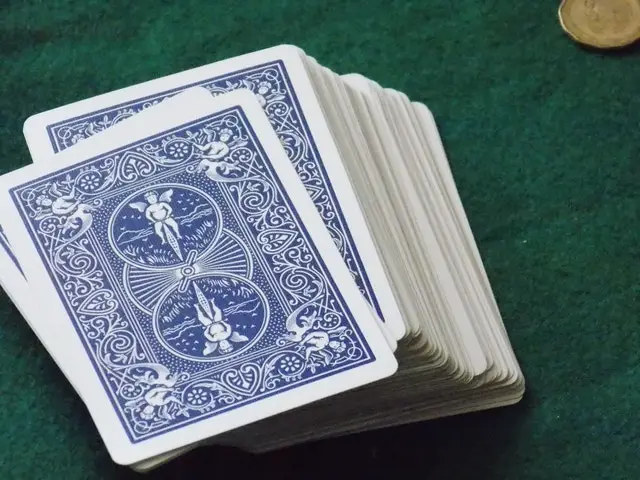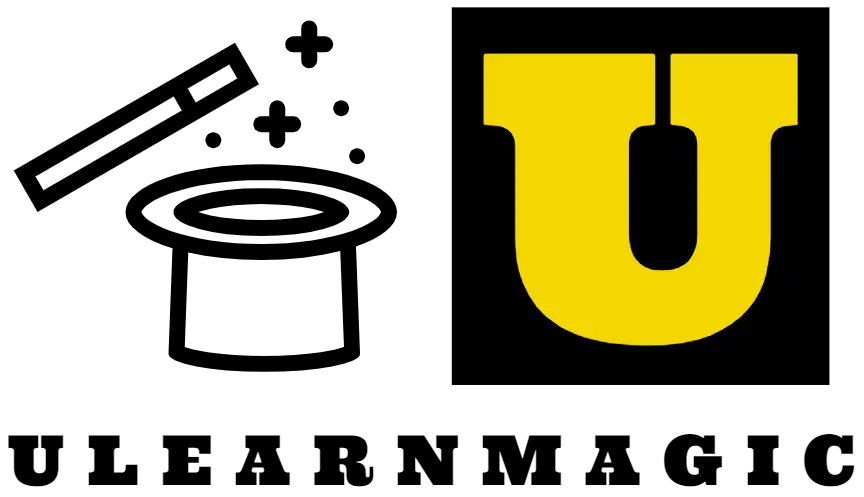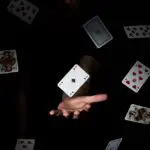
Trick decks are an essential tool in the art of magic. These decks of cards have been designed to allow magicians to create illusions that would be impossible with a regular deck of cards. There are many types of trick decks available, each with its unique properties and abilities.
In this post, we will explore some of the most common trick decks used in magic, their features, and how they are used to create illusions.
What are Trick Card Decks?
Trick card decks are a tool in the art of magic. They allow magicians to create illusions that would be impossible with a regular deck of cards, or make them easier to perform.
There are many different types of trick decks available, each with its unique properties and abilities, which will be listed later. Marked decks, stripper decks, Svengali decks, invisible decks, forcing decks, and double-backed decks are just a few examples of the types of trick decks used in magic.
Benefits of Trick Decks
Magic trick card decks allow the performer to perform tricks that would otherwise be impossible to do with a standard deck of cards. This will many times make for tricks that are even more powerful than could normally have been done without a trick deck.
Another thing is that magic trick decks allow you to perform magic tricks without as much time spent learning sleight of hand. This means that a beginner can essentially do tricks, without first spending months or years practicing and perfecting sleight of hand moves, before the trick can be shown. (For some basic card sleight of hand moves, see Card Sleight of Hand Basics)
Drawbacks of Trick Decks
One of the main drawbacks of trick decks, however, is that these trick card decks can not be examined by the audience. This is because they will instantly see that the deck of cards is not an ordinary deck. One of the exceptions to this is a marked deck, which many times can not be detected by a spectator, even when examining the deck.
Another drawback is that you will need to purchase a trick deck, but usually, these are not expensive, and most trick decks cost only a little more than a standard deck of cards. The exception to this, are some advanced marked decks, which can be more expensive. If you lose your trick deck as well or it gets destroyed, you will need to replace it by purchasing a new one from a magic supplier, rather than just getting a new standard deck which you can find in most places.
Also, you will need to have your trick deck on you in order to perform these magic tricks. This means that you cannot use a borrowed deck in order to perform tricks, and you must carry your trick deck on you, in case you need to perform.
A final drawback of trick decks is that you might also not learn any sleight of hand, which is many times considered essential for a successful magician. Because of this, it’s recommended to use both trick decks and standard decks, that way you can learn tricks that still involve sleight of hand moves.
Tips for Using Magic Trick Decks
The first thing is to make sure you are getting quality trick decks that will not be suspicious looking to audience members. One of the best types of trick decks are any trick decks that have the standard Bicycle designs on them. Most people are familiar with Bicycle cards, and will be less likely to suspect that it is a trick deck of cards, but rather that it is a normal everyday deck.
When using trick decks, it’s important to remember that the audience should never be able to detect the trick. It’s essential to practice and rehearse the use of these decks to ensure that they are used seamlessly and effectively. A magician should also be mindful of not overusing a trick deck in their performance, as this can make the audience suspicious and ruin the overall effect.
While trick decks can be a valuable tool in a magician’s arsenal, it’s important to remember that they are just one aspect of a successful magic performance. A magician should have a strong understanding of audience management, misdirection, and showmanship to create a truly memorable performance.
Trick decks should be used in conjunction with these other elements to create a cohesive and engaging performance that leaves the audience amazed and entertained.
Most Popular Types of Trick Card Decks
Here are some of the most popular types of trick card decks used in magic:
1) Marked Deck
One of the most popular trick decks is the marked deck. A marked deck is a regular deck of cards that has been subtly altered so that each card can be identified by the magician. The markings are usually small and hidden, and the magician can read them to determine the identity of the card.
Marked decks can be used for a variety of effects, including card prediction and location tricks. They can also be used to detect a selected card in a variety of ways, such as by touch or by sight.
2) Stripper Deck
Another popular type of trick deck is the stripper deck. A stripper deck is a deck of cards that has been designed with one or more of its edges shaved down slightly. This creates a slight angle on the cards, allowing the magician to easily slide a selected card from the deck.
The stripper deck can be used for a variety of effects, including card control and location tricks.
3) Svengali Deck
The Svengali deck is another popular trick deck. This deck has been designed so that every other card is the same exact card, and slightly shorter than the rest. This allows the magician to riffle the cards, showing them to be all different, when they are not.
The Svengali deck can be used for a variety of effects, including card prediction and location tricks. A Svengali deck makes the Ambitious card extremely easy to do, since the chosen card will continue showing up at the top of the deck. The chosen card can also be found by the spectator in numerous ways.
The Svengali deck can also be used as a forcing deck, which can create illusions where a card is seemingly chosen at random, only to be revealed as a prediction that the magician had made earlier, or in another way.
One of the best tricks with a svengali deck is to turn the entire deck into the chosen card! If the magician chooses to do so, he can also turn the cards back again to normal (or what looks to be normal to the spectator).
(Learn more about the Svengali deck, including tutorials and tricks at The Svengali Deck Guide – Tricks and Tutorials)
4) Invisible Deck
The invisible deck is a trick deck that has been designed so that every card in the deck appears face up, except for the card chosen by the spectator, which appears face down! The Invisible Deck trick is quite possibly the greatest magic trick of all time and is a very powerful trick.
It can also be used to perform many different types of tricks, as many DVDs and teachings have been available, which use the Invisible Deck in new ways to create even more effects than the original effect of a named card appearing face down in a deck of all face-up cards.
(Learn more about the Invisible Deck at The Invisible Deck Guide)
5) Forcing Decks
The forcing deck is another popular type of trick deck. This deck has been designed so that certain cards are easier to force on a participant. Forcing a card means that the participant is encouraged or led to choose a specific card, even though they believe they are making a free choice.
Forcing decks can be used to create the illusion that the participant seemingly has complete freedom in choosing a card, but in reality, the magician is controlling the outcome.
6) Gaffed Deck
A gaffed deck is a type of trick deck used by magicians to create illusions that would be impossible with a regular deck of cards. A gaffed deck is different from a regular deck of cards because it contains cards that have been specially altered or manufactured to perform specific tricks or effects. These altered cards are referred to as “gaffs.”
Gaffed decks can be used to create a wide range of illusions, from making multiple cards appear to change into a single card, to performing the “3 and a half of Clubs” trick. There are many different types of gaffs that can be used in a gaffed deck, each with its unique properties and abilities.
7) Double-Backed Deck
The double-backed deck is a trick deck that has been designed with two backs. This allows the magician to create illusions where cards seemingly disappear and reappear.
There are a variety of tricks created specifically for double-backed cards, and they can be a powerful tool for the magician.
Final Thoughts
In conclusion, trick decks are an essential tool for any magician looking to create memorable illusions. There are many different types of trick decks available, each with its unique properties and abilities. Marked decks, stripper decks, Svengali decks, invisible decks, forcing decks, and double-backed decks are just a few examples of the types of trick decks used in magic.
When using trick decks, it’s essential to practice and rehearse to ensure a seamless and effective performance. Additionally, trick decks should be used in conjunction with other elements of a successful magic performance, such as audience management, misdirection, and showmanship, to create an engaging and memorable show.
The magician started magic as a kid and has learned from some of the greats. He loves to share his knowledge with others and help out with the subtleties he’s learned along the way.
Follow on YouTube at the link below to get free tricks and advice!

